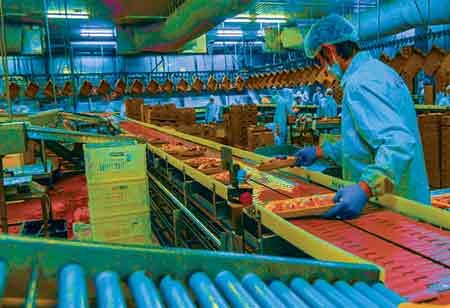THANK YOU FOR SUBSCRIBING
Be first to read the latest tech news, Industry Leader's Insights, and CIO interviews of medium and large enterprises exclusively from Food and Beverage Tech Review
Predictive Maintenance Transforming the Food Manufacturing Industry
Food manufacturing is one of the most regulated industries worldwide to prevent food contamination.

By
Food and Beverages Tech Review | Friday, October 07, 2022
Stay ahead of the industry with exclusive feature stories on the top companies, expert insights and the latest news delivered straight to your inbox. Subscribe today.
Predictive maintenance plays a pivotal role in food safety and prevents food contamination activities that challenge the industry.
FREMONT, CA: Food manufacturing is one of the most regulated industries worldwide to prevent food contamination. Coherent, high-class maintenance measures ensure food safety standards. These services exist in both reactive and proactive forms. However, the focus is on the latter since reacting to a maintenance issue in a food production facility could mean contamination has already occurred. Predictive maintenance is also changing the face of food manufacturing.
Predictive Maintenance Fundamentals
Predictive maintenance, a proactive approach to maintenance management, aims to help predict when maintenance should be performed. It is a data-driven maintenance form designed to analyse the current equipment and apparatus condition to plan for further required interventions. Predictive maintenance acquires this using predictive analytics that estimates potential failure points. The objective is to schedule corrective maintenance prior to the probability of failure points occurring. Maintenance can therefore be planned in advance and when it is convenient and cost-effective to do so. Other maintenance elements include condition monitoring, asset health evaluation, and prognostics.
Predictive maintenance offers a myriad of benefits, such as early fault detection or preventing impending failures, reducing the risk of disruptions to production and downtime, improving production-related assets' performance, optimising machinery and equipment lifespan, and overall savings in production costs due to greater asset efficiencies. Additional benefits include more cost-efficient maintenance costs.
Predictive maintenance technology
Predictive maintenance centres around equipment that must continuously monitor, record, and analyse devices, known as condition monitoring. Smart technology with the Industrial Internet of Things (IIoT), artificial intelligence (AI), and machine learning is the pivot of this predictive technology. An IIoT platform can be connected to a wireless sensor host and probes that monitor everything in food processing operations, from temperature and conductivity to vibration and pressure levels.
These technologies facilitate interconnection between monitoring systems and action data in tandem with each other. For example, an AI-powered sensor in a filter system collaborates in real-time with other sensors to enable constant production-wide data analysis and aggregation. Currently, there are numerous predictive maintenance technologies in food manufacturing.
Oil Analysis Equipment
Oil build-ups or leakages can sometimes be detrimental to instruments. In food manufacturing, this instrumentation is fundamentally used for oil-using equipment like hydraulic and refrigeration systems, conveyor belts, and compressors.
Vibration Analysis Sensors
This method measures whether there are significant changes from a machine’s typical vibration. Deviations regarding vibration, such as near valves or motors, allow for early potential malfunction detection.
Temperature Sensors
This procedure determines hot spots in electronic equipment or those with electrical circuits, indicating overheating or imminent fusing in equipment.
I agree We use cookies on this website to enhance your user experience. By clicking any link on this page you are giving your consent for us to set cookies. More info







